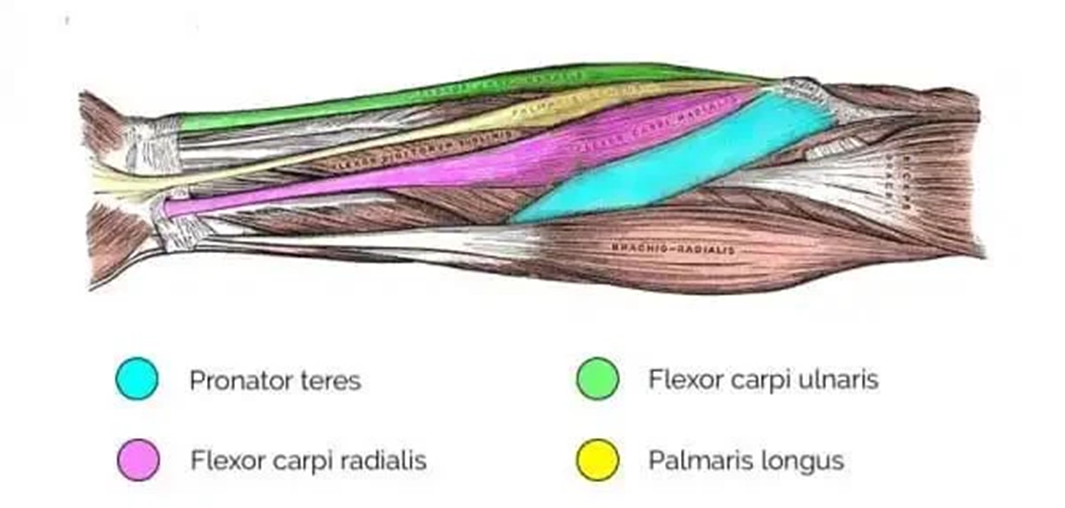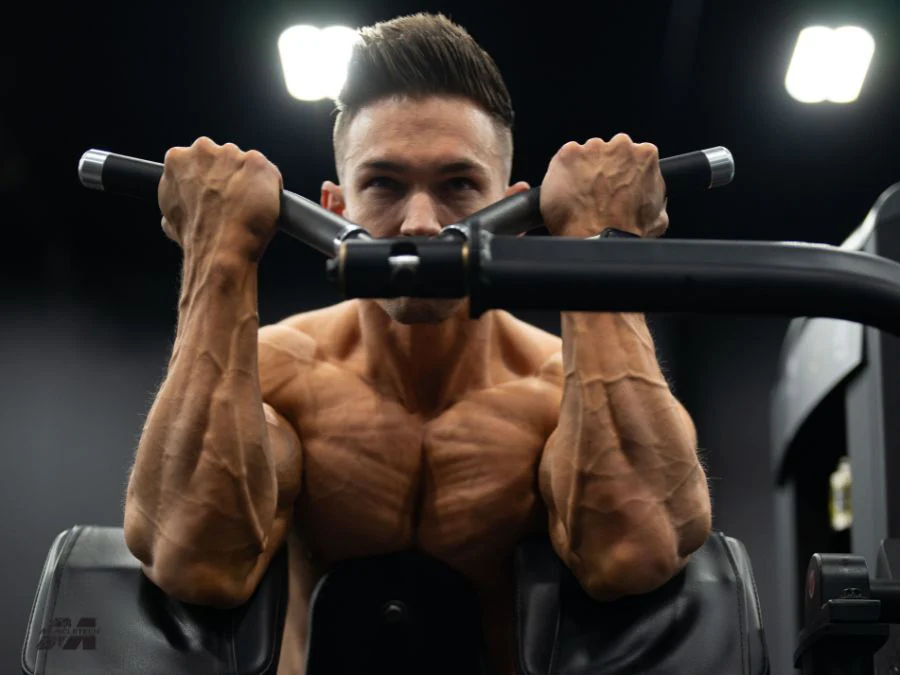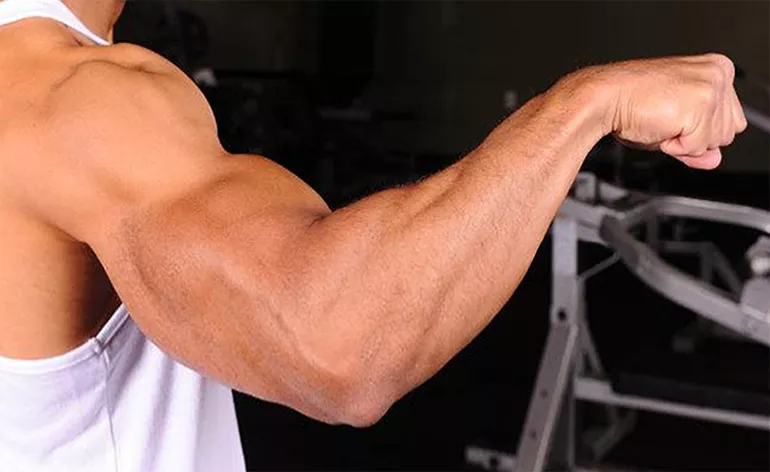Forearm Anatomy Explained: What You’re Really Training
When it comes to building a complete physique, forearms are often the most underdeveloped part of the arm — and the most overlooked. For many lifters, they’re an afterthought at the end of an arm day or a side effect of heavy pulling.
But if your goal is to build powerful, sleeve-stretching arms and develop grip strength that carries over to every major lift, then you need to train your forearms with precision.
And that starts with understanding forearm anatomy — what muscles you’re actually training, what they do, and how to target them for size, strength, and function.
We break down the primary forearm muscles, how they work, why most people undertrain them, and exactly how to train them like a bodybuilder.

Forearm Muscle Groups You Need to Know
The forearm is not just one big muscle — it’s a complex network of smaller muscles that control your wrist, elbow, and fingers. Each one has a specific function and requires specific exercises to develop fully.
Here’s a breakdown of the three primary forearm muscle groups and how to target each effectively.
🔹 1. Brachioradialis
- Location: Lateral (thumb side) of the forearm
- Function: Flexes the elbow, especially during neutral (hammer) grip movements
- Why It Matters: The brachioradialis is a key player in creating that thick, rounded outer forearm look. It adds visible size from the front and side and enhances elbow flexion strength, especially when curling or lifting heavy objects.
✅ Best Exercises to Target It:
- Hammer Curl (Dumbbell or Rope Cable)
- Reverse Curl (EZ Bar or Dumbbell)
- Cross-Body Dumbbell Curl
🔹 2. Wrist Flexors
- Location: Inner forearm (palm side)
- Function: Flex the wrist and fingers. These muscles activate during gripping, squeezing, and curling movements.
- Why It Matters: These are the muscles responsible for the meaty part of your forearm. Strong flexors are essential not just for hypertrophy but for grip control in lifts like rows, curls, and pull-ups.
✅ Best Exercises to Target It:
- Seated Wrist Curls (Barbell or Dumbbell)
- Wrist Roller (Palms-up, rolling toward the body)
- Static Grippers (Hold for time or max reps)
🔹 3. Wrist Extensors
- Location: Outer/top of the forearm (back of the hand side)
- Function: Extend the wrist and stabilize the forearm during pressing and lifting.
- Why It Matters: The extensors are often neglected, but they’re crucial for balance, symmetry, and injury prevention. A well-developed set of extensors provides a “ropey” look and ensures your wrists and elbows stay healthy under load.
✅ Best Exercises to Target It:
- Reverse Wrist Curls (Light weight, high reps)
- Reverse Curls (EZ Bar or Dumbbells)
- Wrist Roller (Palms-down, rolling away from the body)
Why Most Lifters Undertrain Their Forearms
Here’s the truth: if you’re relying on back workouts and curls alone to grow your forearms, you’re leaving serious gains on the table.
Common Mistakes:
- Overusing compound lifts (and relying on straps)
- Neglecting direct wrist motion
- Skipping variety (flexion, extension, grip holds)
- Training with too little time under tension
Most pulling exercises do recruit the forearms, but not to the degree needed for growth. And if you’re using straps for heavy lifts (deadlifts, rows, shrugs), you’re bypassing your grip — and your forearm development suffers.
Forearm Training Examples by Training Focus
Let’s break it down further by goal-oriented training blocks so you can tailor your forearm work to match your needs.
💥 Strength & Thickness
Focus here is on mass-building and mechanical overload. You’ll use heavier weights, controlled tempo, and compound assistance.
Sample Routine:
- Hammer Curl – 3 sets of 8–10 reps
- Farmer’s Carry – 3 rounds of 40 seconds
- EZ Bar Reverse Curl – 3 sets of 10
💡 Tip: Slow down the eccentric (lowering) phase on curls and carries to maximize tension.
🔥 Grip Endurance & Control
Ideal for lifters who want to improve bar control, climbing performance, or carryover to pulling strength.
Sample Routine:
- Plate Pinch Hold – 3 sets of 20 seconds
- Dead Hang (Pull-up Bar) – 2 sets to failure
- Towel Dumbbell Rows – 3 sets of 12 (wrap towel around DB handle)
💡 Tip: Challenge grip with thick bars, towels, or Fat Gripz to increase motor unit recruitment in the forearms.
🧩 Balanced Muscle Development
You can’t just build one part of the forearm and expect complete growth. This plan ensures all regions — brachioradialis, flexors, and extensors — get attention.
Sample Routine:
- Seated Wrist Curl – 3 sets of 12–15 reps
- Reverse Wrist Curl – 3 sets of 15–20 reps
- Wrist Roller (Both Directions) – 2 rounds to failure
💡 Tip: Use light weights with strict form on wrist curls. Momentum cheats the muscle.
Programming Tips: Maximize Your Forearm Gains
Want forearms that look as strong as they feel? Here’s how to train smart:
📅 Frequency
- Train forearms 2–3x per week for optimal hypertrophy and neuromuscular adaptation.
🧱 Variety
- Rotate between wrist flexion, wrist extension, static holds, and neutral-grip curls.
- Don’t rely on the same 2 exercises each week — rotate tools and angles.
⏳ Time Under Tension
- Use slow eccentrics on curls and wrist motions.
- For grip holds, push past 20–30 seconds to activate endurance fibers.
🧲 Progressive Overload
- Increase weight, volume, or density over time.
- Try micro-loading or time-based progressions (e.g., 5 more seconds per week on dead hangs).
🧰 Tools to Enhance Forearm Training
- Fat Gripz or Thick Bars: Increase challenge on any pulling movement.
- Wrist Roller: Perfect for controlled flexion and extension work.
- Captains of Crush Grippers: Gold standard for grip training.
- Towel Training: Adds friction and instability for grip fatigue.
Pro Tips for Targeting Specific Muscles
Want to dial in your training? Use these bodybuilder-approved cues to isolate each forearm muscle group more effectively:
✅ To Target Brachioradialis:
- Use a neutral grip (hammer curl style)
- Keep the elbows tucked and avoid swinging
- Focus on the stretch and contraction at the top
✅ To Target Wrist Flexors:
- Use palms-up wrist motion
- Incorporate squeezing movements like grippers
- Control the eccentric — don’t let the weight drop
✅ To Target Wrist Extensors:
- Use palms-down movements
- Perform reverse curls and wrist curls with high reps
- Use light to moderate weight and strict form to prevent strain
Common Mistakes to Avoid
Even serious lifters can make basic mistakes with forearm training. Here’s what to watch out for:
- ❌ Using momentum on curls — cheats the muscle and increases injury risk
- ❌ Training only with straps — bypasses natural grip development
- ❌ Skipping extensors — leads to imbalance and elbow issues
- ❌ Neglecting recovery — small muscles need high frequency, but also rest
Final Word: Know Your Forearms to Grow Your Forearms
Don’t train blind. If you want serious forearm development, you have to understand what you’re training — and why.
Aesthetic size. Functional grip strength. Balanced elbow joints. It all starts with smart, anatomically-aware programming.
So stop hoping your deadlifts will do all the work. Train your brachioradialis, wrist flexors, and extensors directly — with the same intent and intensity you bring to your chest or back workouts.
Because when you train forearms with precision, you don’t just look strong — you perform strong.
🔗 Related Articles:
- Best Forearm Exercises for Size, Strength, and Grip
- Dumbbell-Only Forearm Workout
- Forearm Finisher: Burnout Sets in 8 Minutes
- Grip Strength Training 101
- Complete Arm Training Guide



